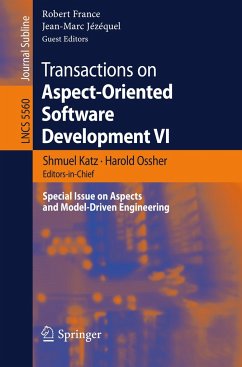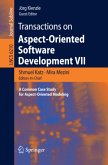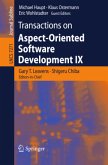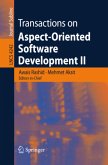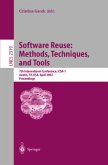work for small problems, but it introduces signi?cant accidental complexities when tackling larger problems. Notethattherealchallengehereisnothowtodesignthesystemtotakeap- ticular aspect into account: there is signi?cant design know-how in industry on this and it is often captured in the form of design patterns. Taking into account more than one aspect can be a little harder, but many large scale successful projects in industry provide some evidence that engineers know how di?erent concerns should be handled. The real challenge is reducing the e?ort that the engineerhasto expendwhengrapplingwithmanyinter-dependentconcerns.For example, in a product-line context, when an engineer wants to replace a variant of an aspect used in a system, she should be able to do this cheaply, quickly and safely. Manually weaving every aspect is not an option. Unlike many models used in the sciences, models in software and in lingu- tics have the same nature as the things they model. In software, this provides an opportunity to automatically derive software from its model, that is, to - tomate the weaving process. This requires models to be formal, and the weaving process be described as a program (i.e., an executable meta-model) manipul- ing models to produce a detailed design. The detailed design produced by the weaving process can ultimately be transformed to code or at least test suites.
From the reviews:
"This collection targets various facets of aspect-oriented software development (AOSD) in the context of model-driven engineering (MDE)--an approach in which models are used to drive the development throughout the entire life cycle of the software. ... This systemic approach is still in the research stage, and the book contains these research reports. The book will be of interest to university research teams concerned with aspect orientation." (Pierre Radulescu-Banu, ACM Computing Reviews, December, 2010)
"This collection targets various facets of aspect-oriented software development (AOSD) in the context of model-driven engineering (MDE)--an approach in which models are used to drive the development throughout the entire life cycle of the software. ... This systemic approach is still in the research stage, and the book contains these research reports. The book will be of interest to university research teams concerned with aspect orientation." (Pierre Radulescu-Banu, ACM Computing Reviews, December, 2010)

